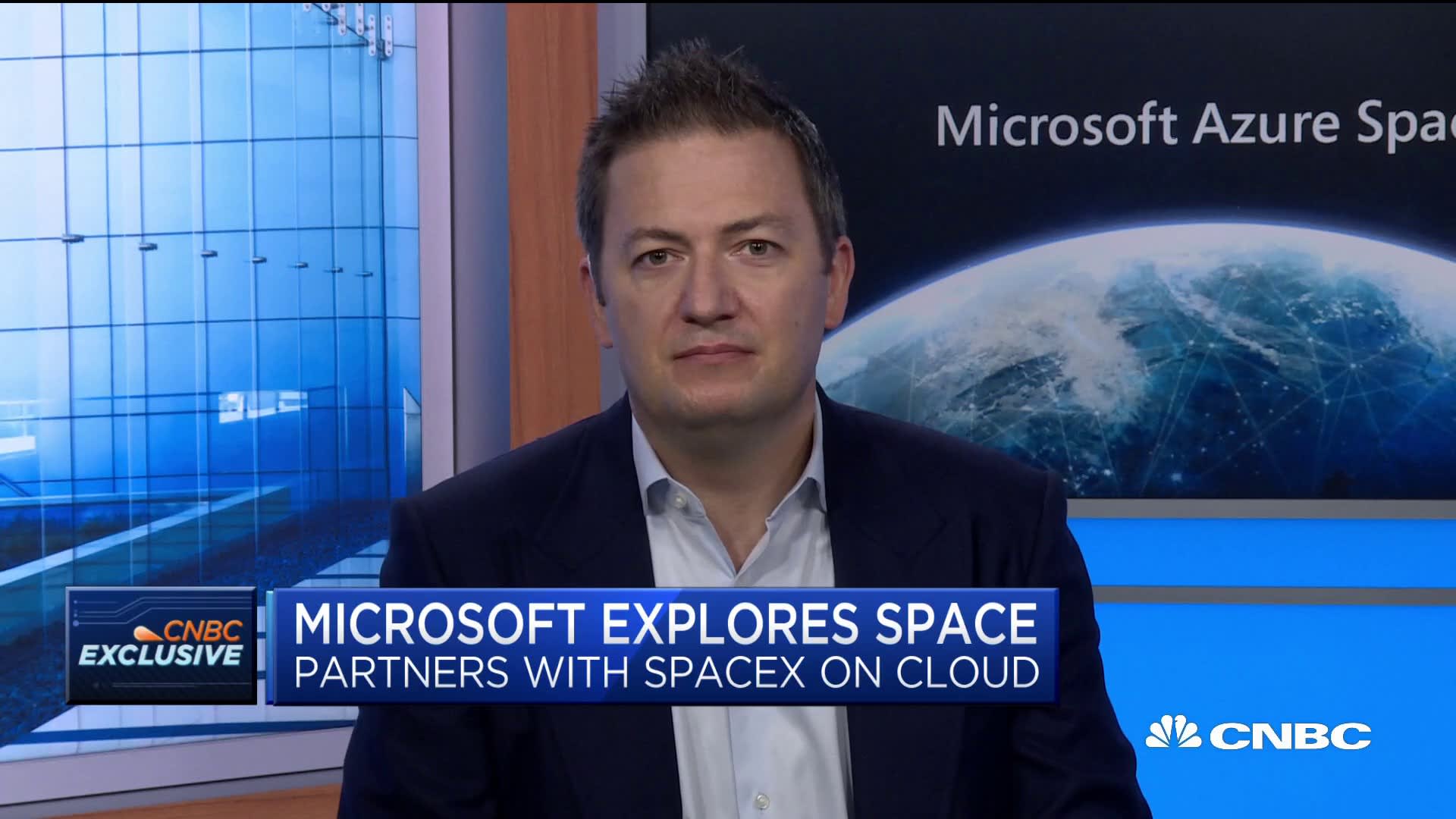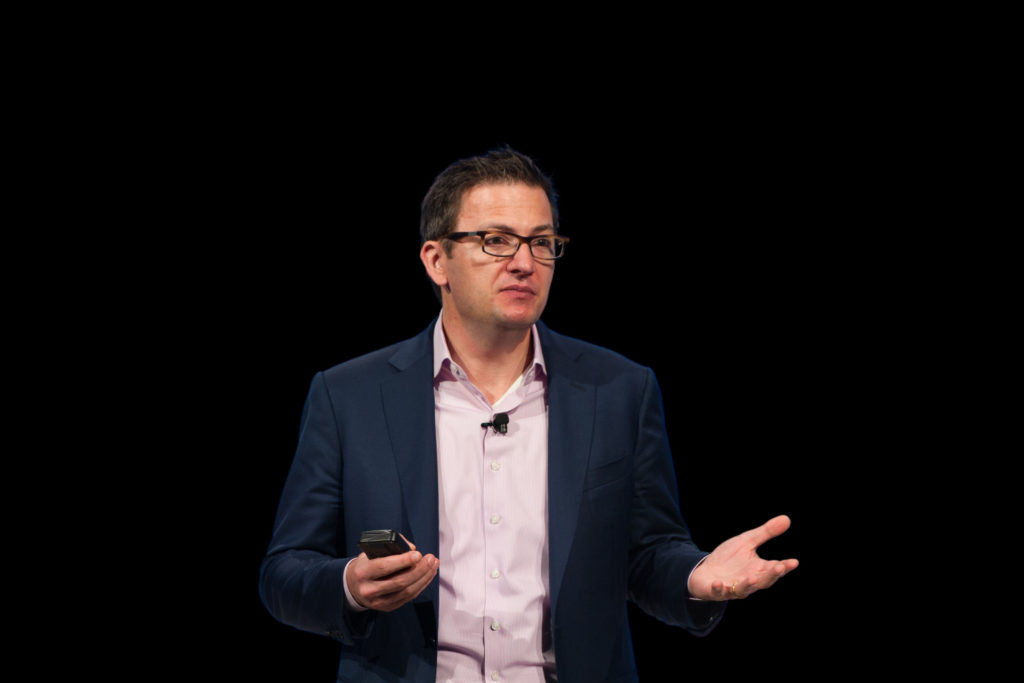Notice: WP_Theme_JSON_Resolver::get_user_data(): Error when decoding a theme.json schema for user data. Syntax error in /home/rushprnewscom-328/public_html/prod/wp-includes/functions.php on line 6114
Like cloud computing before it, edge computing is transforming today’s business landscape. Edge computing is a distributed IT architecture in which data is processed as close to the source of the data as possible. It is not just bringing new people, devices, systems, and networks online but by processing data closer to where it is generated (instead of transmitting it to a far-off data center for processing and returning with responses), edge computing enables data processing at much higher speeds and volumes. It also facilitates better, faster, and more real-time, data-based decision-making. According to Tom Keane, with global cloud networks driving a rapidly growing edge periphery, new edge capabilities are creating new business models and revenue streams. They are also opening the gates for innovative software and application service models that create new technology use cases.
Since data is the lifeblood of any modern business, being able to quickly and efficiently gather, process, and then return insights from data are critical capabilities. Traditional computing infrastructures built on centralized data centers and legacy Internet applications are not well-suited to gathering, processing, storing, and transmitting a never-ending flood of real-world data. Tom Keane says that because of bandwidth limitations, latency issues, a lack of standards, limited integrations between conflicting architectures, unpredictable disruptions, and unique security concerns at the edge, deploying, maintaining, and benefitting from edge devices and systems is sometimes easier said than done.
With that in mind, Tom Keane has talked extensively about how edge computing is reshaping information technology and business computing, and he has also shared insights into interesting use cases, tradeoffs, and implementation considerations that decision-makers should be aware of when approaching new edge opportunities for their businesses.
Tom Keane on the Broad Definition of the Edge
Like the cloud computing revolution spurred by Microsoft Azure, Tom Keane says that edge computing will transform the world of business. One issue, however, is the sheer size and surface of edge devices and networks. The edge is not just a user’s mobile phone or a sensor in a field or on a vehicle. It comprises all of the following:
Devices: These include connected devices deployed on factory floors and shopping malls and in vending machines, hospitals, health care devices, and personal electronic devices. They may perform dedicated or multiple tasks and may even be autonomous.
Sensors: Heat, motion, humidity, wind, location, and other measurement sensors are included here. They can be triggered by preset conditions, after which a sensor-connected device can perform an action. Examples include motion-sensor cameras that initiate a recording when there is movement, or level sensors that send a request for, for example, replenishment (such as for fuel in a remote electric substation) or clearing (such as for garbage bins when they reach capacity).
Mobile: This broad category includes the infrastructure and devices that provide connectivity and data processing capabilities to cell phones, drones, vehicles, and machines. A distributed network of service access points is often used to provide services to these mobile devices.
In addition to the above, based on the appropriate classification, edge routers, software, networks, data centers, and enterprises can also be categorized into edge sites of increasing size. On-premises infrastructure that manages local systems and connects everything from servers and routers to containers, hubs, or bridges or edge devices can also be categorized accordingly. The same can be said of cloud edge and cloudlets that provide edge systems with optimized functionalities, such as content delivery, order processing, data screening, and low-latency computing for mobile users and devices.
Tom Keane Explains Why Edge Computing Is Important
A substantial amount of the world’s computing already takes place at the edge. This includes places such as hospitals, schools, factories, and retail outlets. To process sensitive data and power critical systems that must work safely and reliably, these locations need solutions that have low latency without a network connection. Edge computing does exactly that and has the potential to transform everything from customer engagement and marketing to development and back-office operations while making business functions more adaptive and proactive and unlocking new and optimized experiences for users.
To deliver these benefits, edge computing demands unique and appropriate architectures. Edge computing supports distributed computing closer to and often in the same location as the data source, but the idea of distributed computing is not new. Tom Keane says that remote and branch offices, co-located data centers, and cloud computing platforms are all examples of distributed services, and they all have a long and proven record of success.
However, the decentralization and high levels of monitoring and control needed with edge computing are different, particularly since it involves the collection, transmission, processing, and storage of enormous volumes of data. Furthermore, Tom Keane says that it is not just the volume of data that is the problem, but the time factor as well, since many of today’s tech applications are highly time-sensitive.
Concerns regarding the bandwidth limitations, latency, and congestion of alternative network and system architectures are also helping to drive increased edge adoption, and we can expect this trend to continue for years to come, and the reasons are simple. If we have servers, storage, and processing capabilities where data is generated, we can operate many more devices over a substantially smaller and more efficient LAN. Also, when bandwidth is used exclusively by local devices, latency and congestion become virtually nonexistent. With automation and edge analytics capabilities (or by at least pre-processing and reducing data before it is shipped off to a centralized data center for advanced processing), decisions can be made in real-time or near real-time – all to the benefit of users.
Industry-specific examples of edge computing that illustrate these concerns are given further down this post but suffice it here to say that the relentless penetration of tech devices and solutions in every conceivable industry and use case will only increase the criticality of performant edge devices, networks, and solutions. It will also apply substantial pressure on businesses to innovate in ways that leverage edge solutions to remain competitive.
The Numerous (and Growing) Benefits and Applications of Edge Computing
In tandem with cloud computing capabilities such as those provided by Microsoft Azure, Google Cloud, Amazon Web Services (AWS), and others. Edge computing will help businesses reimagine experiences of every kind. While many early edge computing use cases were restricted to manufacturing and IoT, Tom Keane says that new edge innovations and offerings have opened up a whole world of efficiency, capabilities, and possibilities for astute, forward-looking decision-makers who understand edge computing and know where and how to leverage it to their advantage.
Benefits
In terms of benefits, Tom Keane says that some of the more obvious benefits of deploying edge devices, sensors, systems, and related infrastructure and empowering edge capabilities include:
Rapid Response: Critical for many industries and use cases such as disaster response, flagging system breaches, or pinpointing hazards (such as an overheating machine part) in real-time, but more obvious examples include self-driving vehicles and telesurgery.
Bandwidth Management: In many scenarios, even though the cloud can handle large data volumes, data transmission costs and the physical limitations of the network often mean it is easier and more cost-effective to process data at the edge.
Privacy Concerns: In many cases, users may prefer – or may be required – to store, process, and control their sensitive data locally instead of sending it to the cloud.
Remote Operations: Edge computing allows remote connectivity to, for example, offshore oil drilling platforms and electrical substations, and creates new supply chain and transportation capabilities such as tracking people, vehicles, or shipments that are en route.
Cost Management: IT infrastructures are made up of layers of users, vendors, suppliers, and other stakeholders. Processing data in different parts of this IT continuum creates different cost tradeoffs and concerns, and Tom Keane says that they can be offset and/or better managed using various edge strategies that allow for the innovative deployment of resources and capabilities at different parts of the network.
Autonomous Operations: In some cases, connecting to the cloud may not be possible or may be intermittent or unreliable at best. In such cases, users may have to resort to processing within their local environment to maintain operations, and edge devices and networks can be configured to do just that.
Applications and Use Cases
Even a cursory sampling of the applications and use cases of edge computing demonstrate how powerful it can be in redefining best practices, standards, and accepted approaches to doing business in a rapidly changing digital world.
Manufacturing: Edge sensors, devices, and machine learning can help pinpoint production errors and improve quality. Data on assembly or manufacturing times, resources in stock, bottlenecks, and other metrics can also be used to help manufacturers operate in a more agile and lean manner. Workplace safety can also be enhanced by using tech devices and components to do dangerous work in place of human operators.
Farming: Edge capabilities can be used to track everything from sunlight and temperatures to humidity and water levels and yield. This can then be used to automate reordering, deliveries, and more.
Network Optimization: Edge devices and sensors can be used to optimize network performance – and Tom Keane says that this doesn’t only apply to IT networks. From train schedules and garbage collection routes to data packet sorting and retail deliveries, the right edge devices can get data, resources, people, and more from A to B as quickly, efficiently, and safely as possible.
Healthcare: While at Microsoft, Tom Keane helped launch Azure for Healthcare. He says that the amount of patient data collected by the healthcare industry has expanded dramatically, and there is also a vast amount of data collected from the medical devices and sensors used in healthcare. Edge computing with automation and machine learning capabilities can be used to identify problems and help doctors and clinicians take immediate action to help patients in real-time. Also, solutions such as robot-assisted surgery require real-time data and responses, but they provide incremental improvements that can have long-lasting impacts. For example, with telesurgery, surgeons no longer need to stand, they can enjoy a better view of the operation site, and they can operate less invasively – all of which can lead to vastly improved patient outcomes.
Transportation: According to various estimates, autonomous vehicles use and produce between 5 TB and 20TB of data per day. Data on vehicle location, speed, and condition, as well as road conditions, traffic patterns, and the weather, must be aggregated and analyzed in real time – all while the vehicle is in motion. This requires a significant amount of onboard computational power, and autonomous vehicles are therefore edge devices in this respect.

Challenges and Considerations
As mentioned above, IT architectures must be tailored to the use case or need at hand, and edge computing is no different. Based on his experiences at Microsoft, Tom Keane says that some of the key considerations for any edge initiative include:
- The physical location of the device, sensor, or data generator;
- Location or use case-specific security or privacy requirements, such as the GDPR for data privacy or laws (such as financial or healthcare laws) that govern business and data processes in different countries or regions;
- Round trip latency and the associated costs of bandwidth and delays;
- Connectivity management for devices and users of all kinds;
- Scale requirements;
- On-premises requirements;
- How near a given device or data center needs to be to the end user.
Tom Keane says that these considerations should be kept in mind while addressing the many challenges that business leaders face when it comes to edge computing. A few of the biggest challenges are as follows:
A Lack of Standards and Integrations: Successful edge computing requires the right infrastructure, devices, privacy, security, and maintenance. This requires cooperation and collaboration from many different parties, from cloud providers and networks to device manufacturers, data centers, and more. Incompatible tech stacks and misaligned systems can lead to failure or suboptimal outcomes.
Rapidly Changing Ecosystem Coupled with Endless Tech Options: Advancements in AI, machine learning, 5G, MEC (multi-access edge computing), cloud computing, on-site vs. offsite servers, and more have all complicated matters for tech leaders, and a clear understanding of the options, benefits, and tradeoffs are required if the ideal solution is to be arrived at.
Untapped Potential at the Edge: It can be difficult for businesses to fully understand and then capture the value that their edge solutions can unlock for them. Companies should move beyond the low-hanging fruit of easy-wins and limited-run pilots to the applications and deployments that deliver large and sustained ROI.
Unique Security and Privacy Challenges: The security and privacy of user data and systems must extend seamlessly from the cloud and data centers to edge devices and instances. However, there are many time and safety considerations when operating with edge devices and systems, while there is the constant threat of downtime, power outages, and limited access (and the physical security of) infrastructure that is not easy to reach. Businesses also risk the quick obsolescence of devices that quickly become outdated thanks to rapid innovation in the tech space, and Tom Keane says that patching may not be possible if uptime, production capabilities, or safety are impacted by frequent reboots.
Maintenance and Business Continuity: The physical and digital security, connectivity, management, and maintenance of thousands or even millions of devices, sensors, and systems in a huge edge network with a vastly enlarged attack surface can become a logistical nightmare if it is not properly planned. Tom Keane says that over his 20+ year career at Microsoft, proactively building systems and solutions from the ground up with these considerations in mind – instead of trying to implement them reactively and after the fact – became a standard part of business and is what helped Microsoft Azure achieve the level of ubiquity and success it has today.
Final Thoughts
With continuing innovation and the unrelenting advancement of technology, the proliferation of digital solutions, services, and offerings is expected to continue. At the dawn of the information age, few may have predicted that billions of users will have handheld mobile devices within a few short years, with billions of additional sensors, devices, components, systems, and platforms creating a layered web that runs on data and unlocks untold amounts of value for all. From autonomous vehicles and traffic management systems to smart cities, medical devices, retail solutions, agriculture, industrial process monitoring, predictive maintenance, and security, edge computing is taking the capabilities of cloud computing down to the level of individual users and devices. Coupled with advanced AI, machine learning, improvements in 5G, and the expansion of the IoT, edge computing is poised to be the competitive differentiator between businesses that prepared for and benefitted from new edge capabilities and those that did not.



